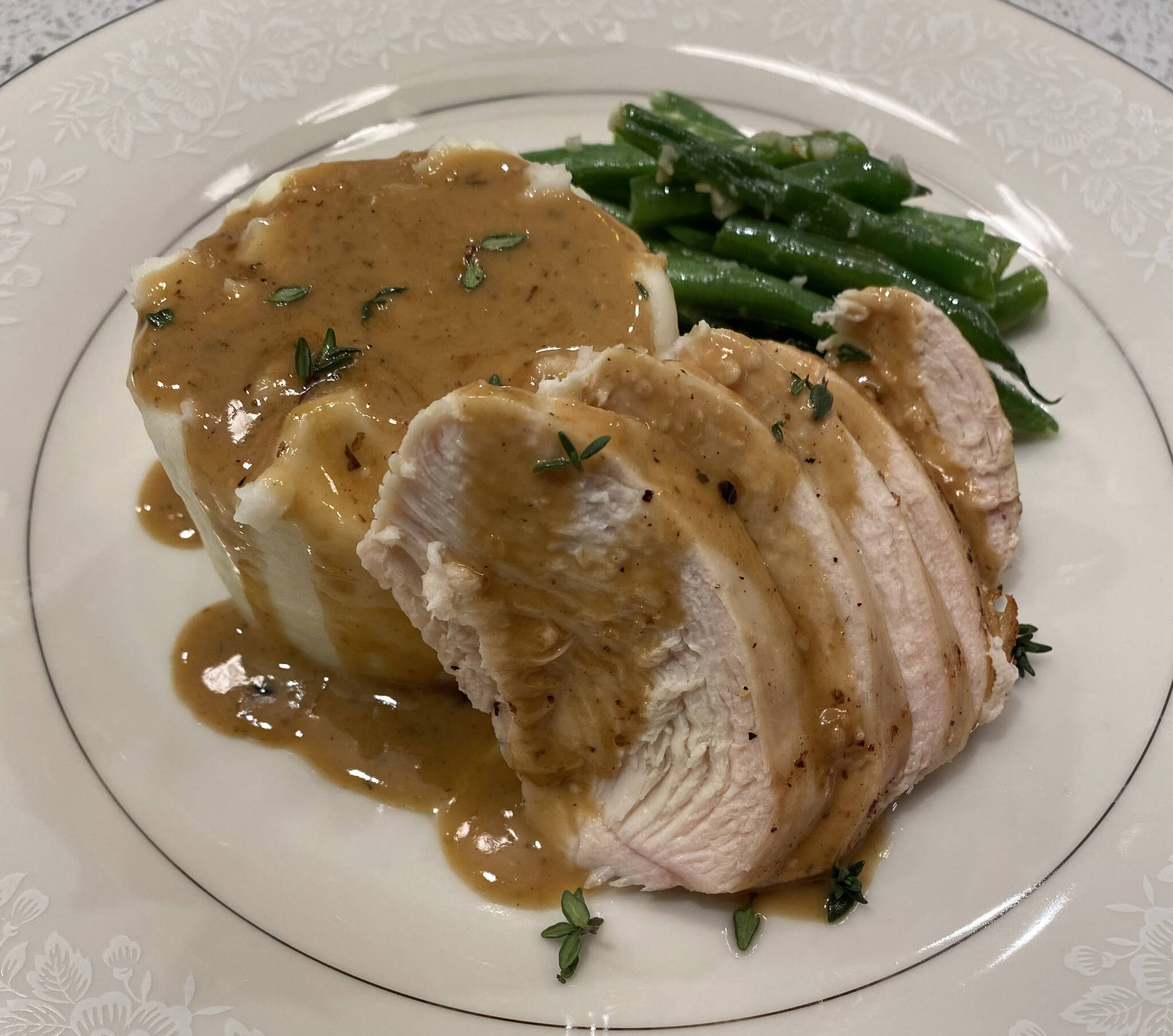I woke up early that morning to review my production timeline — I had read it a dozen times by then. I got to the classroom early to sharpen my knives while I eyed my chef’s office door, waiting for him to post the testing order for the make-or-break midterms.
When he finally taped the spreadsheet to his office window, all 16 of us clambered around to see who would get the fire order first, and my name was dead last.
Our midterm test was a simple meal: chicken breast, mashed potatoes, green beans and pan sauce. Everyone was required to use the same cooking methods and ingredients. The object was to demonstrate proficiency in standard kitchen and sanitation procedures, butchery and meat handling, vegetable and starch preparation, varied cooking techniques, and plating timing and artistry.
I executed the task as planned and set my offering down according to Escoffier serving etiquette — from the diner’s left with my left hand (now sporting three fresh bandages, a product of my nerves).
This plate was his 16th taste of the same meal, but he received it with enthusiasm, and began demolishing it with his fork and knife. He poked and smeared and swirled the food around to check for lumps in the mash or an undercooked bean, and finally satisfied, he took a few slow bites before returning his cutlery to the plate and asking me to be seated.
He congratulated me on an expertly made plate but informed me the highest grade he could give me was an 85%, as each throbbing cut on my hand had deducted 5 points. Had my nerves not gotten the best of me, I would have earned a perfect score.
I wish I could say I took that lesson to heart, but the truth is that now, 10 years after this fateful midterm test, most of my shortcomings are still ultimately the result of my own self-doubt. An unfortunate trait, but as common as gummy mashed potatoes.
Mashed potatoes are deceptively hard to get right, but if you follow this method, you can confidently serve creamy, fluffy potatoes every time.
Ingredients:
2 pounds russet potatoes, peeled and cut into large chunks
6 tablespoons unsalted butter, room temperature
¼ cup heavy cream, heated until steaming
Salt and white pepper to taste
Directions:
Bring a large pot of well salted water to a boil, turn the heat down until the water is just bubbling, then carefully drop in your peeled potatoes. You want the chunks of potatoes to be quite big, like a small egg, because smaller pieces will absorb more water and will result in soggy potatoes.
Keep the water at a slow bubble, not a rolling boil, to avoid agitating the potatoes too much. The more they are agitated, the more starch will be released, and the more water will end up in the potato.
When a fork easily enters the potato, they are cooked.
Strain and return to the pot.
Turn the heat back on and cook the potatoes in the dry pan for a few minutes, carefully stirring. This will burn off any residual water.
If you have a ricer, this is the time to use it. A ricer ensures the smoothest possible finish. If you don’t have one, a masher is fine, but be as gentle as you can. Under no circumstances should you use a hand or stand mixer or blender, as this will almost certainly result in gummy potatoes.
Salt the potatoes as you mash. You will need more than you think, so don’t be shy.
When the potatoes are sufficiently mashed, add in your room temperature butter and heated cream. Do not add cold dairy — this will cool the potatoes down and could affect the texture. Mix gently with a rubber spatula until thoroughly combined and smooth.
Taste and season with extra salt and white pepper.
Serve immediately — reheated potatoes will never be as good as fresh.


